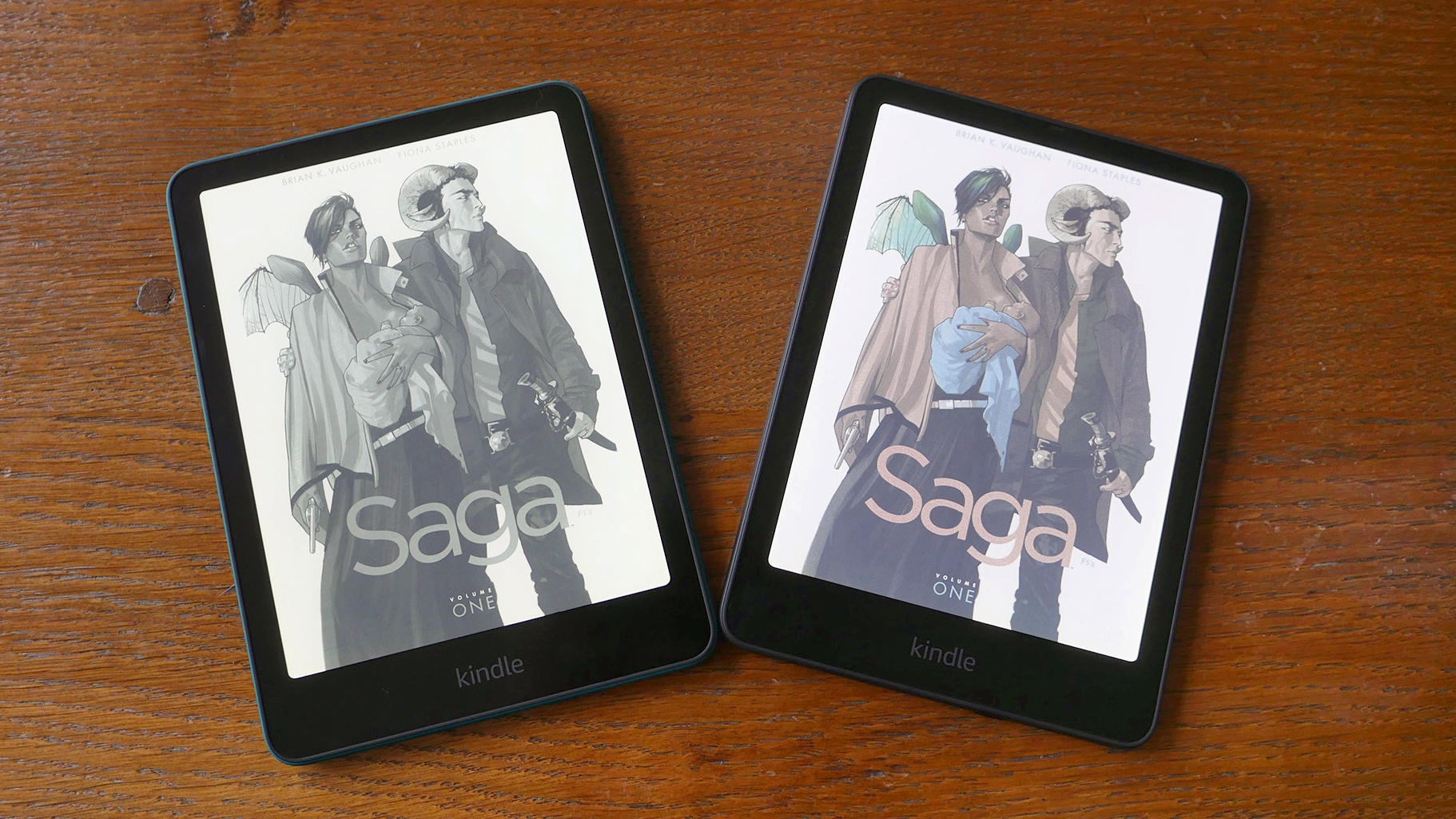
The Kindle Colorsoft has arrived to quite a lot of fanfare – and you can read my full review of the first-ever colour Kindle to get a detailed sense of how I've found it to use. Do so, though, and you'll notice that there are quite a lot of comparisons to the Kindle Paperwhite in there – the 2024 version which I've also just reviewed.
That's because Amazon has made it all but impossible not to compare the two models, thanks to very similar designs but quite divergent pricing. If you're wondering whether the Kindle Colorsoft or Paperwhite is the best choice for you, read on to find out more about exactly how they differ – as it's not simply B&W versus colour – and which is the best Kindle overall for you.
Kindle Colorsoft vs Kindle Paperwhite: Pricing
Before I get into any specs comparisons, it's worth zooming in on the pricing that Amazon has established for its new Kindle lineup, because it's more than a little interesting. The Kindle Colorsoft arrives at £269.99 / $279.99 (it's not coming to Australia until 2025, with pricing TBC). That immediately makes it one of the more premium Kindles in the range, priced quite close to the Kindle Oasis, which offers buttons and a different design.
The 2024 version of the Paperwhite, meanwhile, comes in at £159.99 / $159.99 for the standard edition (with ads on the lock screen). It's £169.99 / $179.99 without ads, or finally £189.99 / $199.99 for the Signature Edition, which adds wireless charging and auto-adjusting brightness. For clarity, every Kindle Colorsoft is technically a Signature Edition too, so both of those features are included.
That makes comparing pricing a little challenging – if you take the Paperwhite Signature Edition as the closest comparison, it's £80 / $80 cheaper. If, as I'd be tempted to, you think the standard Paperwhite is the more compelling option for most people, you're looking at a £100 / $100 difference.
Kindle Colorsoft vs Kindle Paperwhite: Design
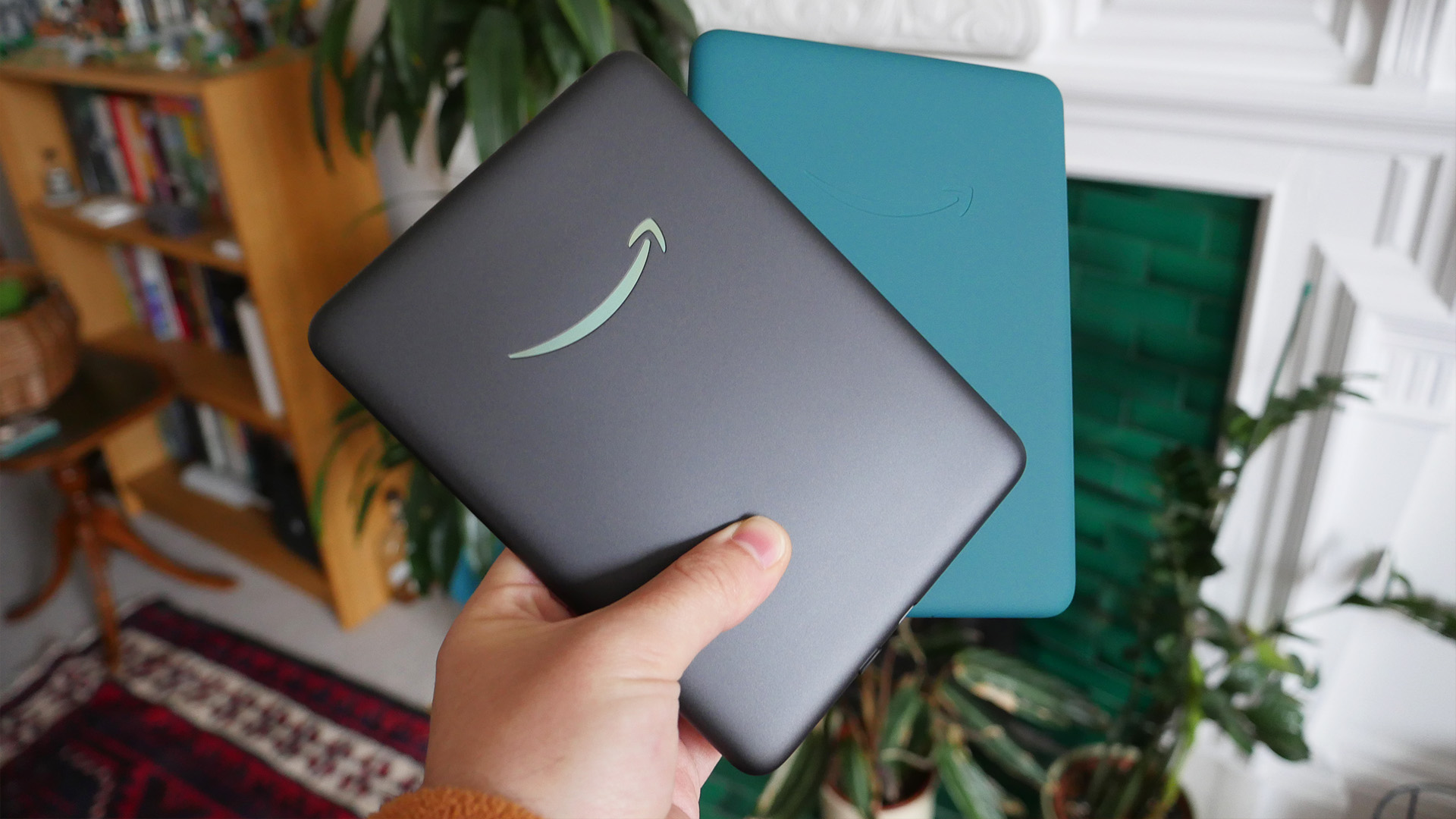
If you were to turn their screens off (something that can't really happen because of how E ink works, but as a thought experiment) and put them side by side, you'd find it near-impossible to tell the Colorsoft and Paperwhite apart. Their designs and dimensions are nearly identical, down to the millimetre:
- Kindle Paperwhite: 127.5 x 176.7 x 7.8 mm
- Kindle Colorsoft: 127.6 x 176.7 x 7.8 mm
That said, the Paperwhite offers the choice of three colour options for the back of the e-reader: black, green or pink. These are all quite nice to look at, but in the case of the Colorsoft your only option is black. That might disappoint you, but given many people put their Kindles in cases either way, it probably doesn't matter a huge amount. Another little sign is that the Colorsoft's Amazon logo, on the rear of the tablet, is iridescent in a nod to its colour screen, which is absent on the Paperwhite.
Both tablets have the same display size, too, a 7-inch panel that has chunky bezels for your grip to rest on while you hold it. There's no lip at all here, with a single flat pane, but it's fairly soft to the touch thanks to an anti-reflective coating that is also present on both models, to reduce glare. Each tablet has a USB-C port on the bottom for charging it, along with a power button for waking and sleeping the device.
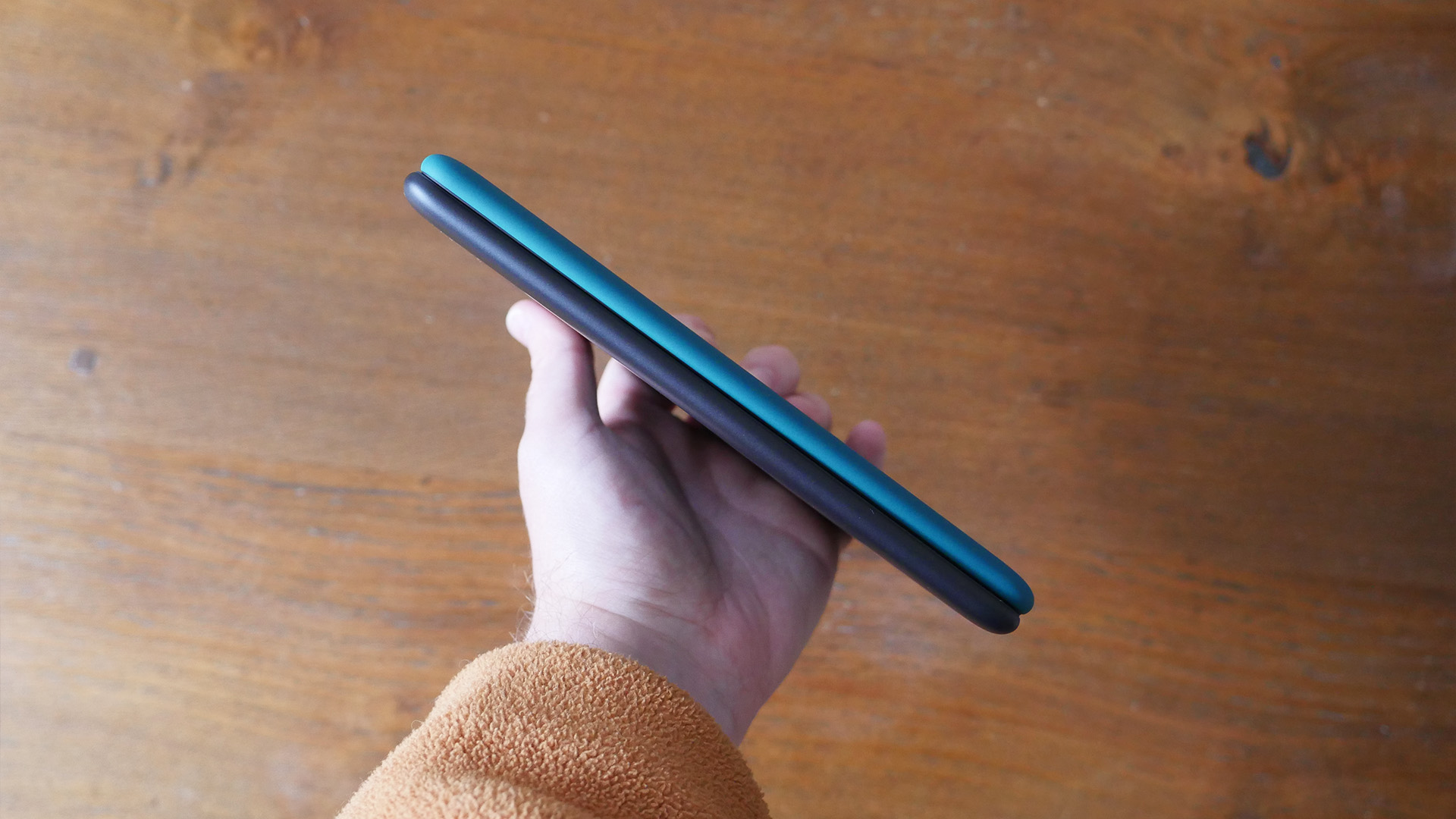
There's a tiny difference in weight, although it's not one I think most people will ever notice. The Kindle Paperwhite comes in at 211g, while the Colorsoft is a feather heavier at 219g. Either way, both are extremely portable and easy to store in a bag for travel or commuting. They're also both waterproof to the same level, so a drop in the bathtub will be shrugged off by either thanks to an IP rating of IPX8.
Kindle Colorsoft vs Kindle Paperwhite: Display
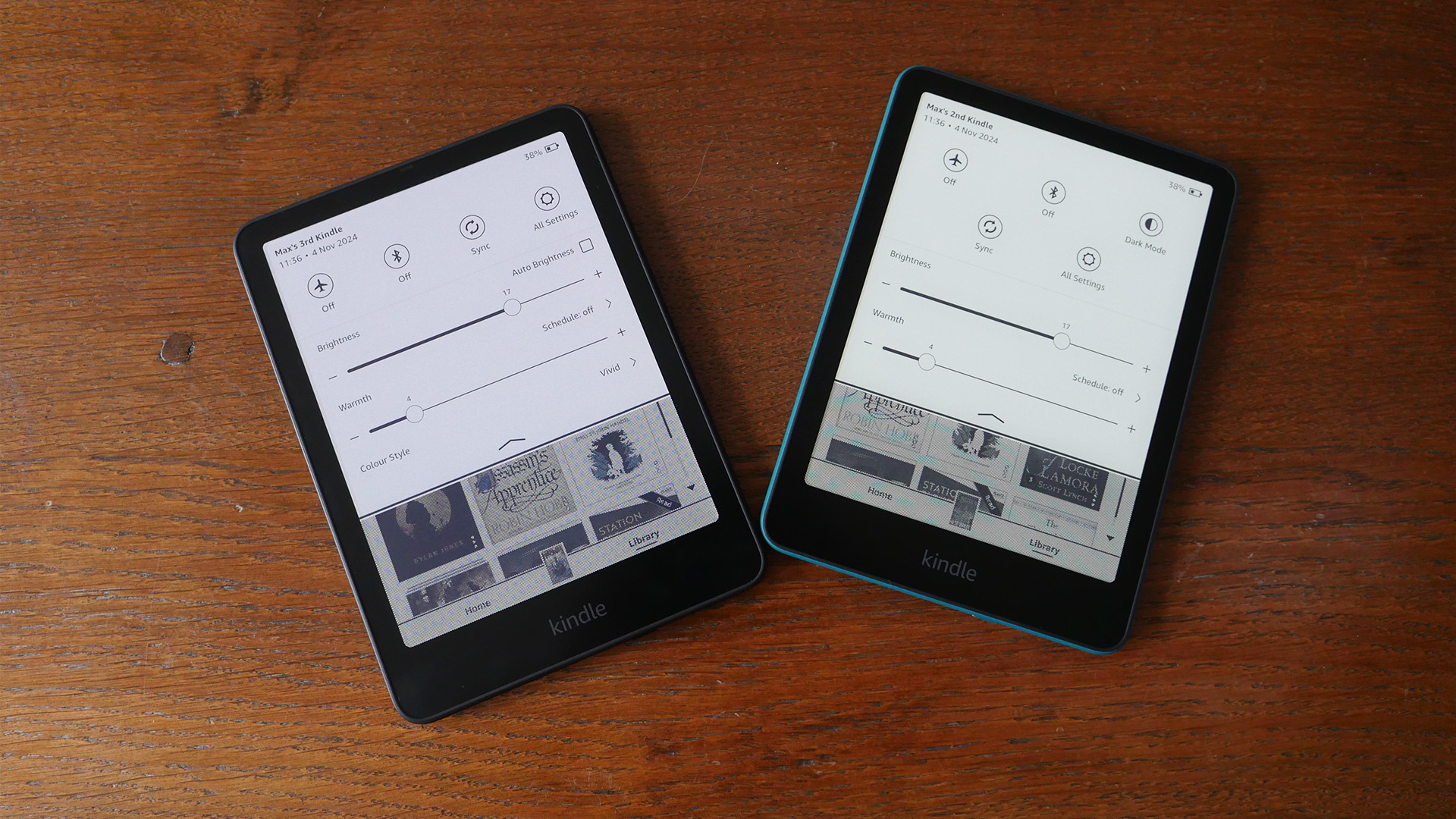
Of course, all of that has been talking around the one obvious and huge difference between these two Kindles – colour. The Colorsoft is the first Kindle to include a colour E ink screen, and you can tell that the moment you clap your eyes on it, since even its lock screens are colourful.
The Colorsoft's colour screen works just how you're used to if you've used a normal Kindle, so you still use all the same swipes and taps to move around its interface. You'll see the screen refresh itself a little more slowly than it would with black-and-white content, to keep up. The new Paperwhite is technically a tiny bit faster at page-turning than the Colorsoft, but not by a huge amount.
It's also worth explaining that Colorsoft detects when you're viewing colour content like a comic and turns on its colour at that point, so if you're just reading a regular book, it'll be in black-and-white mode. There's a clarity difference here, too – black-and-white mode has a 300dpi pixel density (the same as the Paperwhite), but it's halved to 150ppi for colour, resulting in less sharpness.
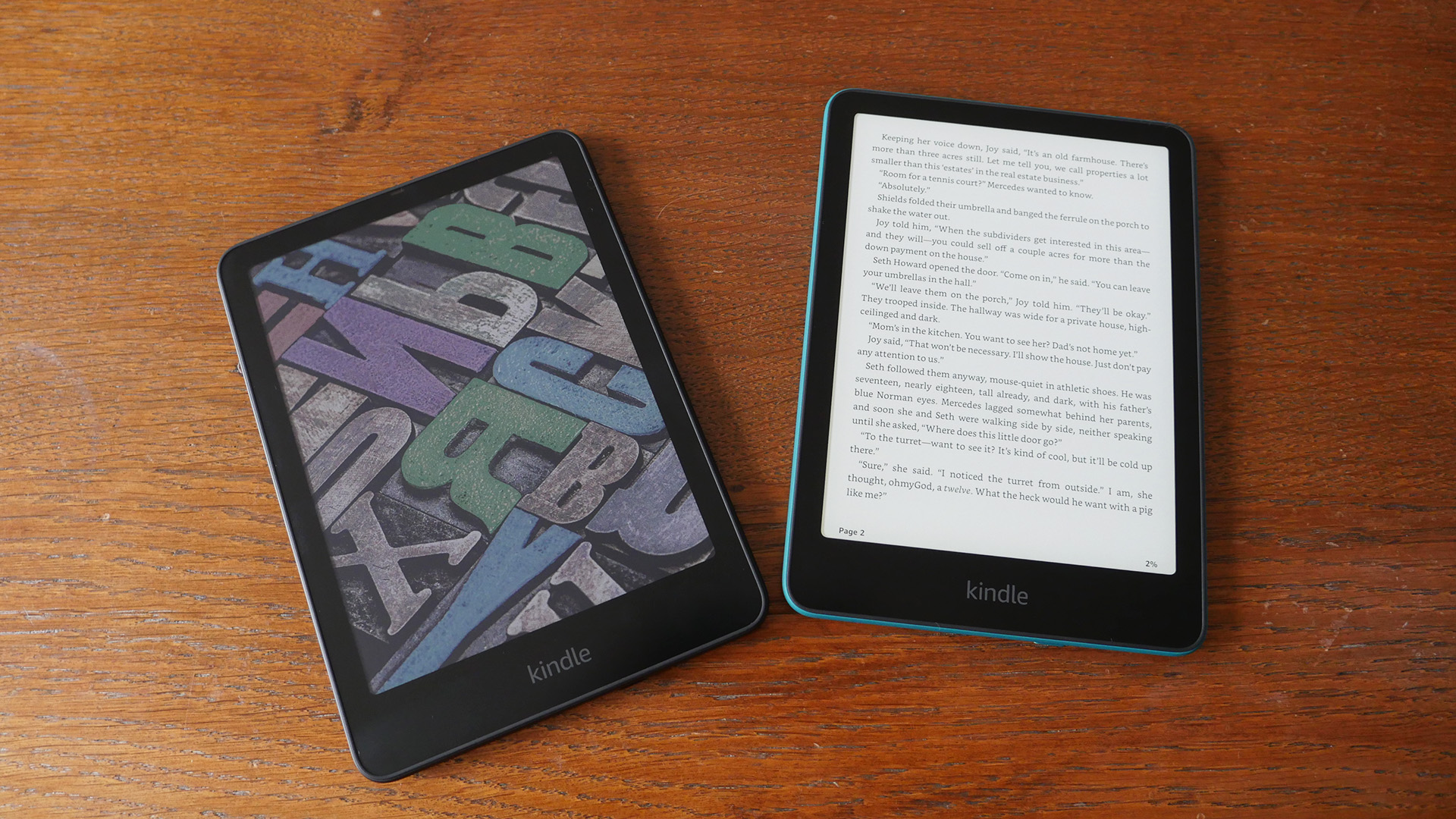
The Colorsoft has two colour modes to choose between, with one adding no tweaks and the other (Vivid mode) adding some saturation to make things pop a little more.
This colour display changes the game, letting you enjoy colour comics, illustrations and travel books on your Kindle without nearly as much compromise. That said, it's still nowhere near as bright as one of the best tablets, and you'll sometimes notice that comic panels don't exactly pop off the page as they otherwise might.
The Paperwhite and Colorsoft both have the option to manually control the brightness of your display, as well as its warmth, which makes it easy to get the right feel for you. The Signature Edition of the Paperwhite, meanwhile, adds the automatic brightness that comes as standard on the Colorsoft.
One area where the Paperwhite has an advantage is contrast. It simply has slightly better contrast, making text that little bit clearer and easier to read – and this is something you can notice once you're clued into it.
Kindle Colorsoft vs Kindle Paperwhite: Features and battery
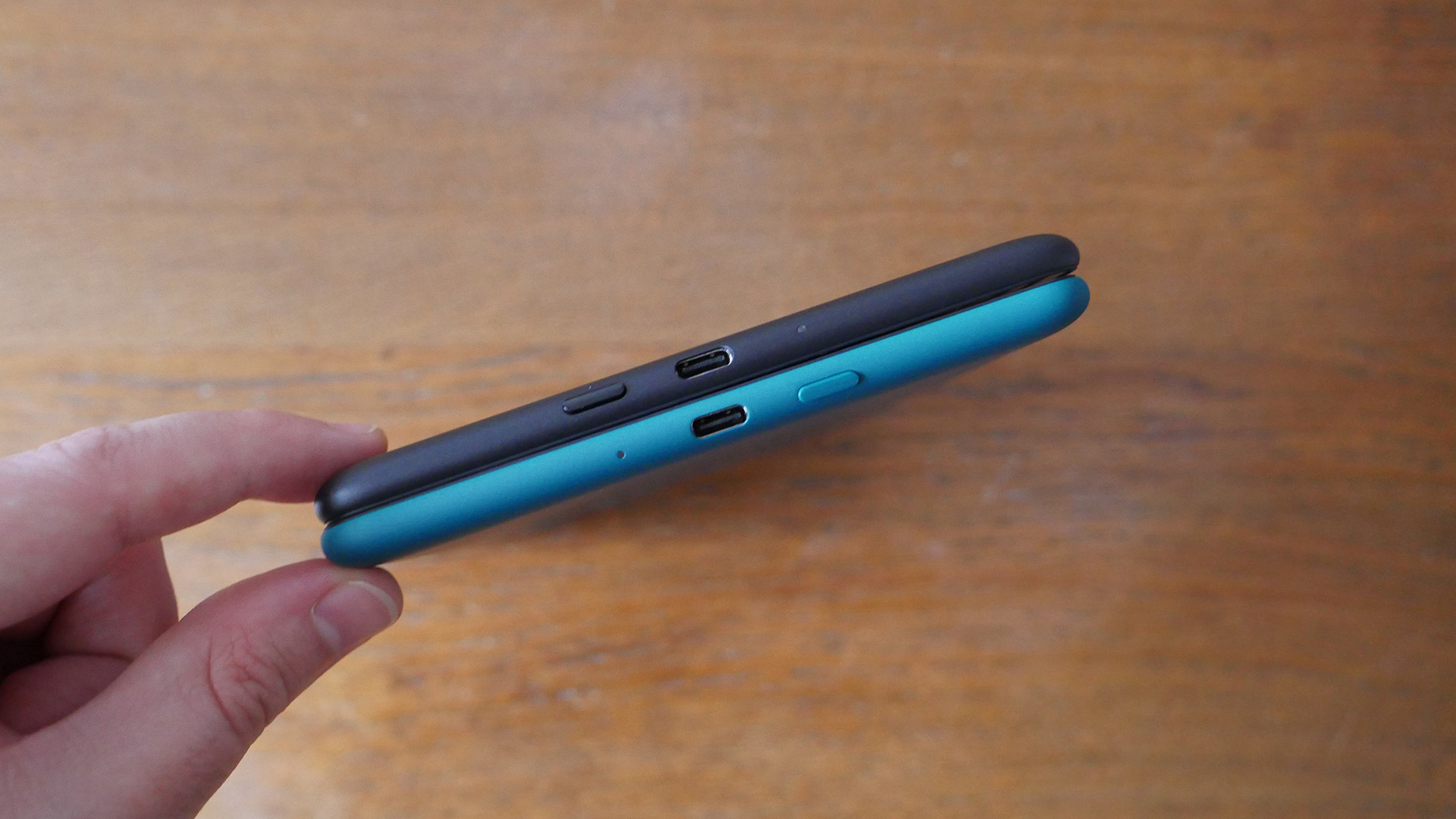
As I mentioned while explaining their pricing, every Kindle Colorsoft comes with wireless charging included as standard, while you have to pay for the Paperwhite Signature Edition to get the same. Whether that matters is up for debate – this isn't the sort of device you charge very often, so I've found a cable more convenient than nightly wireless charging, like with one of the best phones.
Other than that and automatic brightness, the two e-readers are nearly identical in performance when you're reading a text. Their page-turning speed is so close as to be imperceptibly different, and if you choose the Colorsoft because you read comics occasionally, you're highly unlikely to ever gripe to yourself about its slightly less stellar (but still excellent) contrast.
However, there's one more area where things diverge in a meaningful way – battery life. To be clear, both have excellent performance, but despite a technically larger internal battery, the Colorsoft has a noticeably shorter life between charges. It can go for eight weeks, according to Amazon, while the Paperwhite can manage 12 weeks.
If you're reading novels on low brightness, those figures will prove very accurate, but the important caveat here is that in my testing I needed the brightness cranked way up to enjoy comics on the Colorsoft. That means that the battery drained quicker, and could be something to note if you do plan to dabble in graphic novels.
Kindle Colorsoft vs Kindle Paperwhite: Which is best?
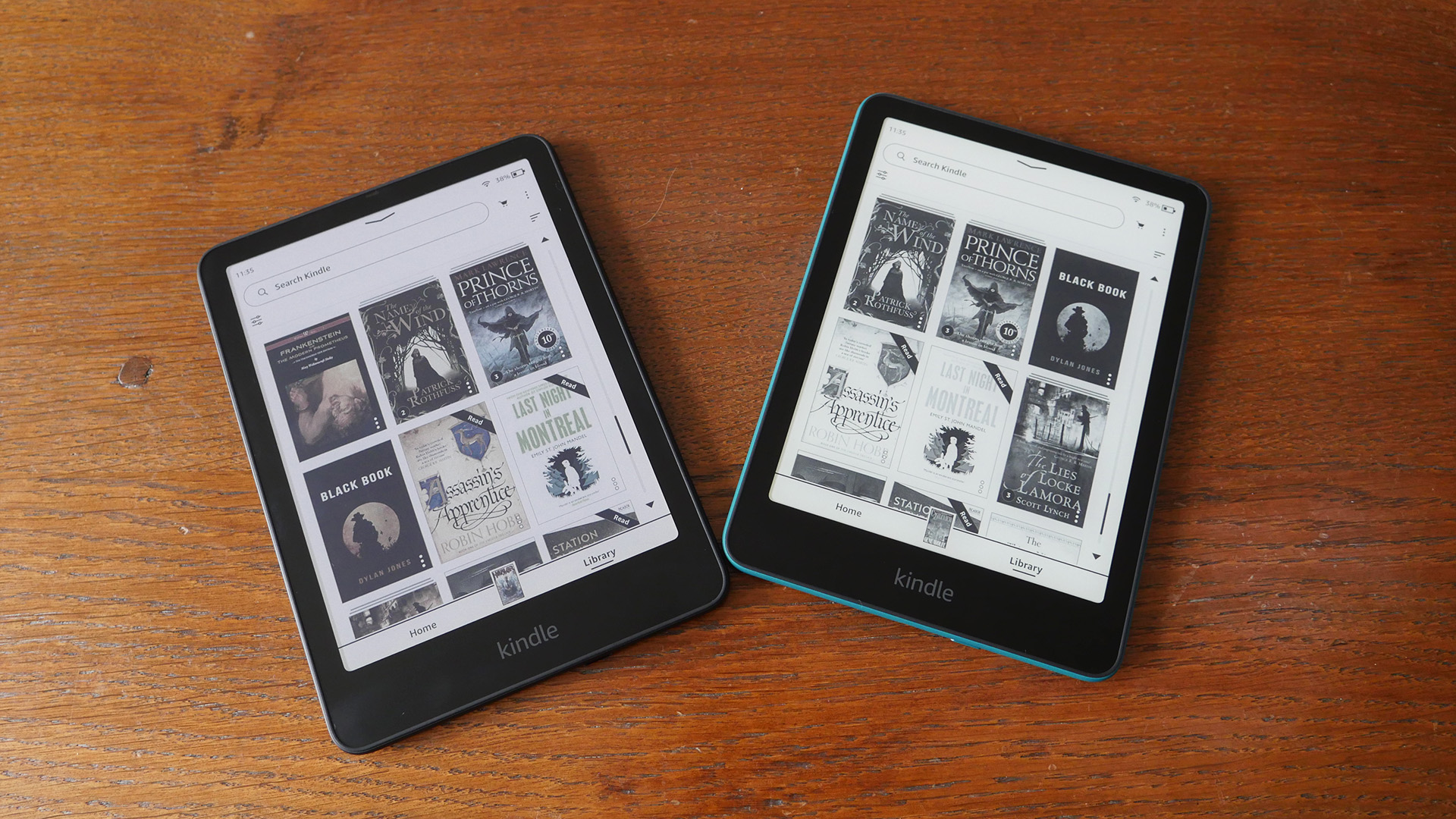
Trying to tie all of these comparisons up might seem complicated, but my thoughts are actually pretty clear. While the Kindle Colorsoft has convinced me that Amazon will make some stunning colour Kindle versions in the years to come, it's not the best option for most people right now.
The Kindle Paperwhite's 2024 refresh makes it the best it's ever been, with improved contrast that genuinely does make a difference to the sharpness of text (I noticed this, having upgraded from my lowly generations-old version). It's the same size, and for the vast majority of reading purposes it's therefore actually slightly better than the more expensive Colorsoft.
So the latest Paperwhite is the better choice, and a money-saving option, unless you're in that niche of people who want a Kindle for sure, but also want to read comics on it, even if just occasionally. That should be a fairly easy choice for most people, but it's worth knowing that those who do opt for the Colorsoft will still be getting an excellent Kindle, in my view.







